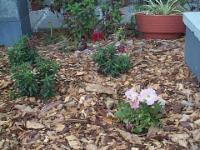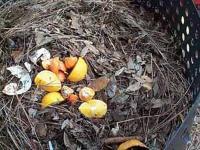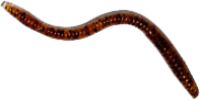![Hands sift through compost ready for use. [credit: uf/ifas]](/media/sfylifasufledu/sarasota/images/banner1650x470/2015_Comms_T4_compostHands_1650w.jpg)
COMPOSTING METHODS
Three broad categories summarize the types of composting in use today: cold/slow, hot/fast, and worm-based. Each has advantages and disadvantages. As with the choice of what materials to compost, what type of compost bin/container to use, and other facets of composting, there is no right or wrong answer. Just compost. Click any item below to learn more (show all items).
Cold/Slow
Cold/slow composting is for people who have more carbon (brown) material than nitrogen (green) material, and are not concerned about a slow composting rate, a desire for weed seed destruction, or a need for plant disease suppression.
The advantages of cold/slow composting include ease of implementation, lower level of management required.
The disadvantages of cold/slow composting include slow rate of decomposition and potential for pests to excavate buried wastes. Additionally, if the raw materials contain weed seed or plant pathogens, these will not be destroyed in the composting process.
Some examples of cold/slow composting include:
You may also use this method to build up organic matter throughout the yard. You can build cold piles wherever you need compost, under trees, in washed out areas, in the space that will be next year's garden, etc. Over the course of a year or two, the material will decompose, adding valuable organic matter to the soil, without the need for a formalized bin or composting activity.
Sheet Composting

Sheet composting
Sheet Composting involves top-dressing organic material on the soil surface and allowing the materials to decompose without further manipulation. As the materials decompose, compost filters slowly into the soil below. Leaves, wood chips, and other mulches are examples of sheet composting.
The advantages of sheet composting include ease of implementation and the moisture retention qualities of mulch.
The disadvantages of sheet composting include slow rate of decomposition and it is not compatible with composting all materials such as kitchen scraps. Additionally, if the raw materials contain weed seed or plant pathogens, these undesirables will not be destroyed in the sheet composting process.
Trench Composting
Trench Composting is a relatively straight-forward method of composting directly in the soil. This method does not require a bin. Simply dig a trench 8 inches deep in the garden area, fill with 4 inches of kitchen scraps and backfill with soil.
After a few months, the material will have decomposed sufficiently for planting above the compost trench. For large amounts of material, consider roto-tilling the material into the soil, and waiting a season before planting.
The advantages of trench composting include ease of implementation and its ability to handle kitchen scraps without attracting pests as readily as in sheet composting.
The disadvantages of trench composting include slow rate of decomposition and potential for pests to excavate trenches. Additionally, if the raw materials contain weed seed or plant pathogens, these undesirables will not be destroyed in the trench composting process.
A variant of trench composting was taught to the pilgrims by the Native Americans. You may have heard the story of how Squanto showed the pilgrims how to fertilize their corn crops by burying fish scraps underneath the corn. As the fish composted, nutrients were released for the crop.
Cold Bin Composting

Cold bin composting
Simply fill your compost bin halfway with browns and bury kitchen scraps in the bin. After a month or so, start layering kitchen scraps and thoroughly covering with browns and a little soil. Keep adding material throughout the year. As the bin fills up, start a second compost bin. After a year or so, the material in the first bin will have decomposed enough for most landscape uses. Start harvesting from the bottom of the pile.
With Cold Bin composting, bury or cover new material with browns. Exposed food, like these oranges, will attract pests.
Heap Composting
You do not have to have a bin to have a compost system. A compost heap can be created anywhere in your yard, it's simply a collection of compostable materials placed in a designated area. However, bins help keep the compost neat and tidy, and may help you exclude pests if they are a problem.
Hot/Fast
Hot/fast composting will yield the fastest rate of composting and best control of weed seed and plant pathogens. Hot composting is also the most intensive method and requires several elements to succeed, including:
- a minimum of 1 cubic yard of material to start the pile;
- a blend of greens and browns (C:N Ratio);
- proper moisture content;
- frequent turning to provide aeration; and
- particle size of less than 2–3 inches.
Worm-based

Earthworm
Many people know the value of worms in their garden. Worms are great decomposers, especially red wigglers and African nightcrawlers. If you generate only kitchen and table scraps, or if you live in an apartment, composting with worms (officially called "vermicomposting") is the way to go. If you'd like to learn more, or if you'd like worm-box design information, see Vermicomposting: Composting with Worms.
Learn More
- Natural Resources